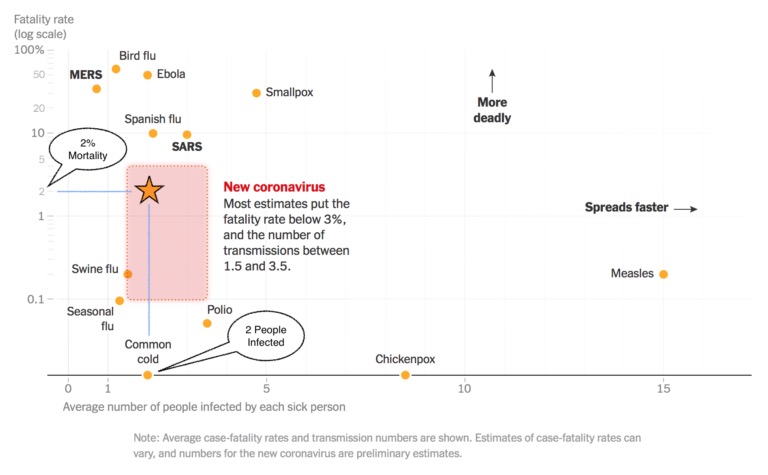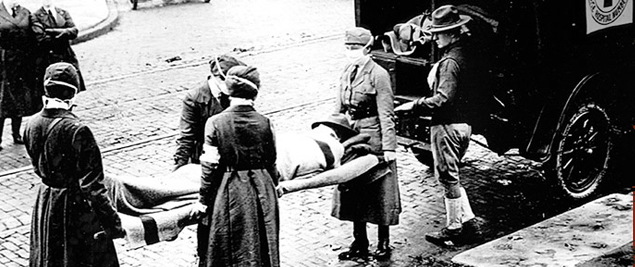Thoughts on the Approaching COVID19 Pandemic (2020)
Richard Rathe, March 1 2020 (Commentary, History)
Written during the early days of the COVID Pandemic

I've annotated this NY Times graphic, rounding the estimates for COVID19 (aka the 2019 novel coronavirus) to 2% mortality and 2 people infected for every one who has the disease. What this suggests is the infection rate will be similar to a bad cold season, but unlike the common cold, a significant number of people will die of the disease.
This is not good news, but it is also not catastrophic.
By comparison the 1918 Spanish
Flu (see below) had a similar infection rate but killed 1 in 10 (10%)! The 1918 Flu infected approximately one third of ALL the people on earth… and that was before air travel!
Based on these numbers alone, up to 110 million people in the US could be infected. 80% of these cases should be mild, 20% will need some form of special care in hospitals or at home, and 2% (2.2 million) could die.
One area where the 1918 Flu differs from COVID19 is the latter does not seem to kill children, which is a small bright spot. However, children may be a source of infection for vulnerable adults!
Note that the currently reported mortality rate is over 3% but here in the US we have done almost NO testing, so the total number of infected individuals is unknown, but likely to be much higher. This means the reported mortality rate is probably inflated due to lack of good data. I'll stick with 2% as a conservative figure for now.
It is also important to remember one of the lessons of the 1918 epidemic, things may look better when warmer weather returns but this should not be reassuring. In the spring of 1918 it looked like the disease was weakening, but it returned with a vengeance in the fall and winter!
The 1918 Influenza Pandemic

The 1918 influenza was the most severe pandemic in recent history. It was caused by an H1N1 virus with genes of avian origin. Although there is not universal consensus regarding where the virus originated, it spread worldwide during 1918-1919. In the United States, it was first identified in military personnel in spring 1918. It is estimated that about 500 million people or one-third of the world’s population became infected with this virus. The number of deaths was estimated to be at least 50 million worldwide with about 675,000 occurring in the United States.
Mortality was high in people younger than 5 years old, 20-40 years old, and 65 years and older. The high mortality in healthy people, including those in the 20-40 year age group, was a unique feature of this pandemic. While the 1918 H1N1 virus has been synthesized and evaluated, the properties that made it so devastating are not well understood. With no vaccines to protect against influenza infection and no antibiotics to treat secondary bacterial infections that can be associated with influenza infections, control efforts worldwide were limited to non-pharmaceutical interventions such as isolation, quarantine, good personal hygiene, use of disinfectants, and limitations of public gatherings, which were applied unevenly.
The original cdc.gov web page (from which this was taken) has been removed, accessed June 2025.